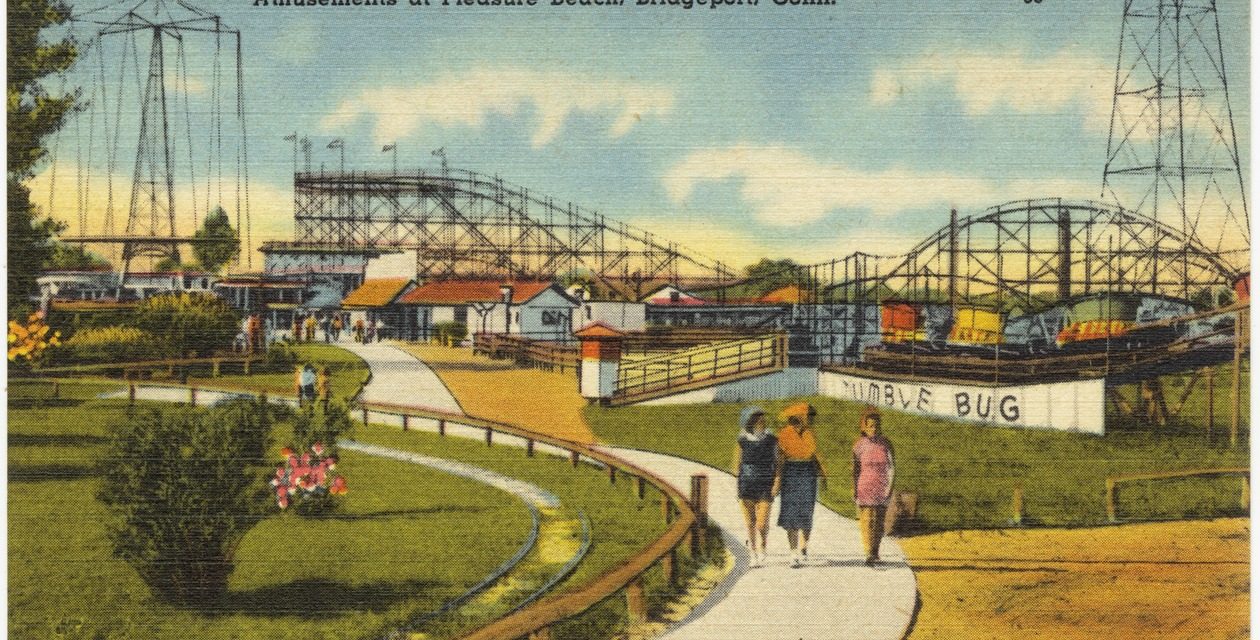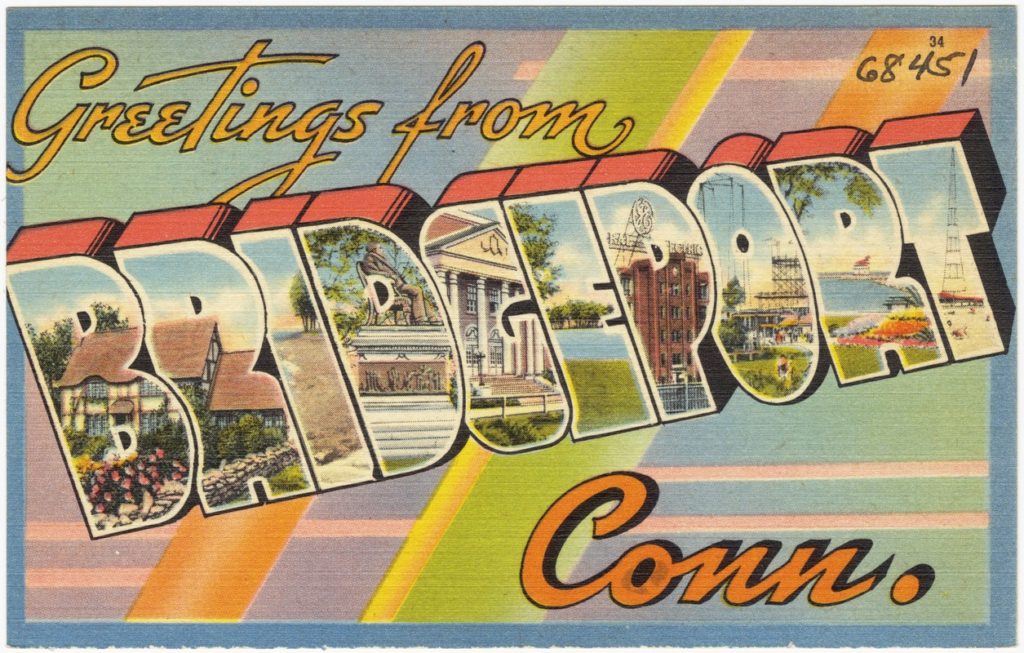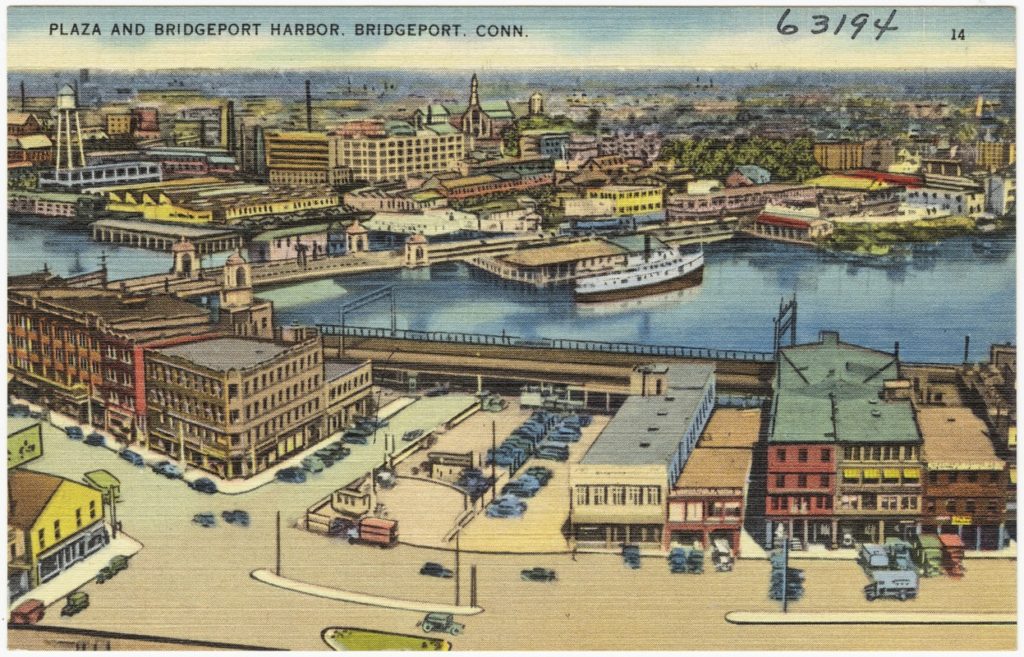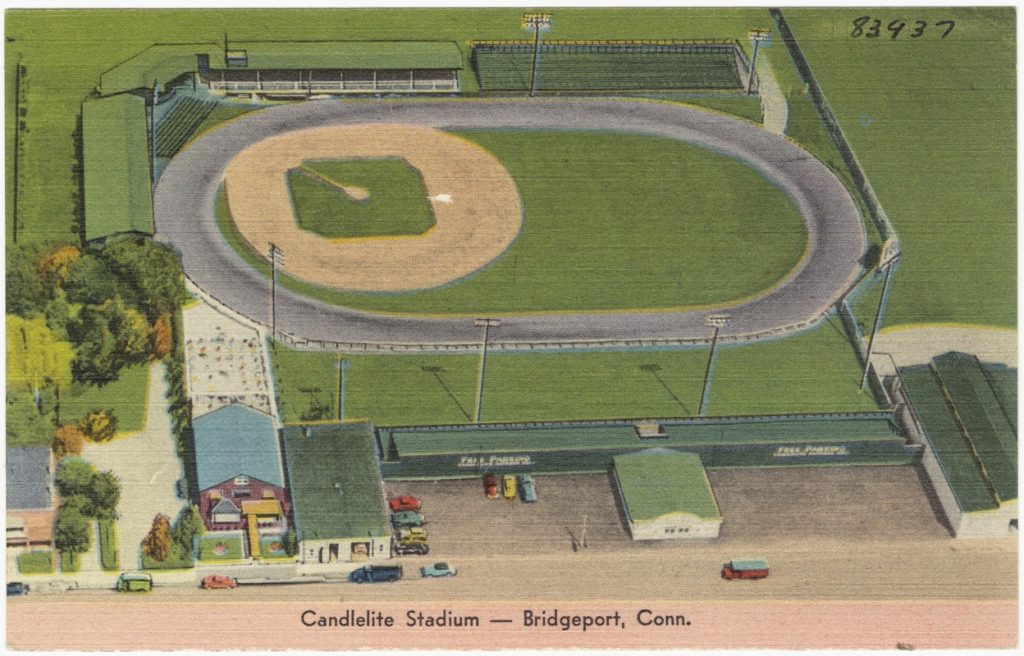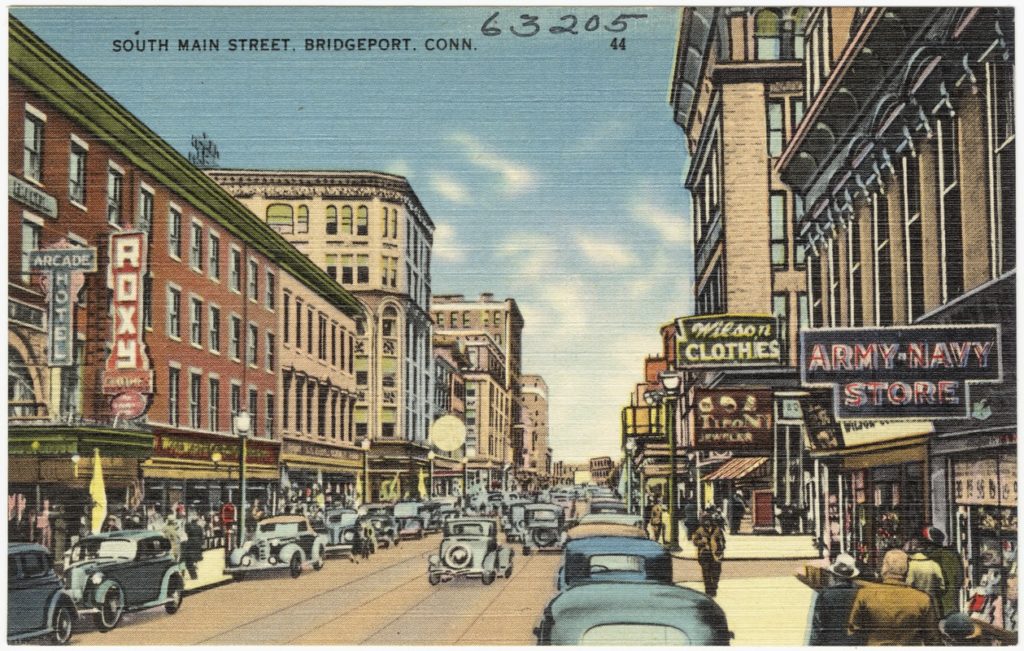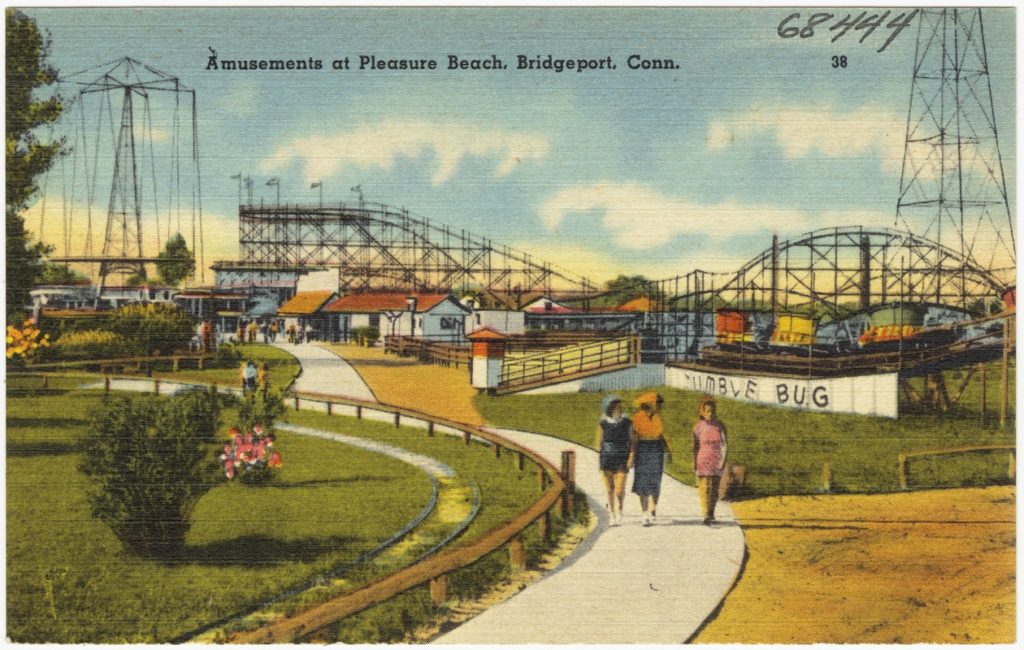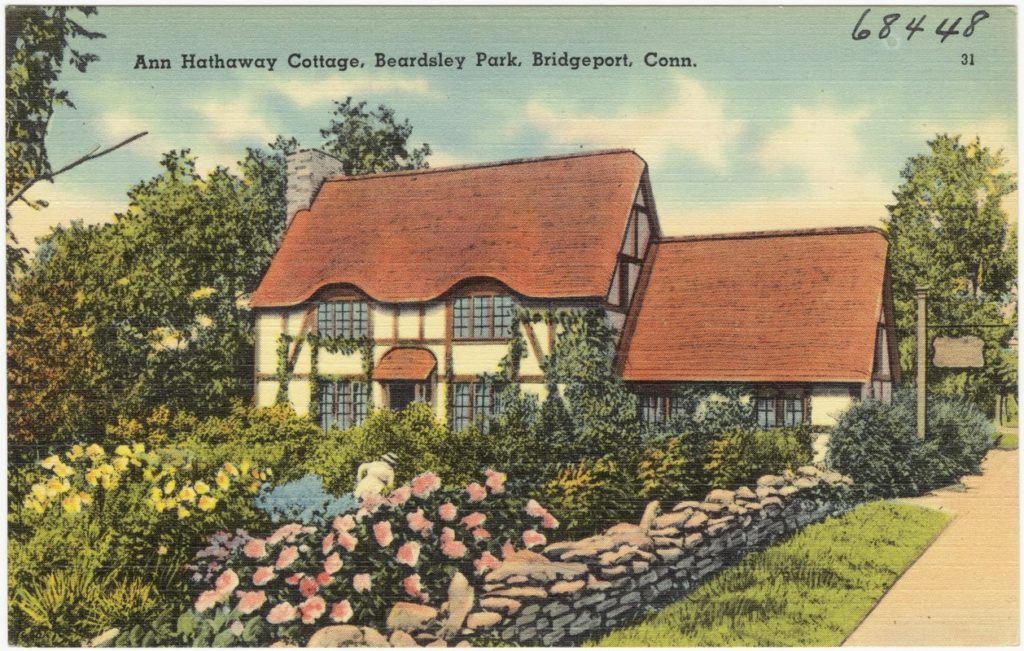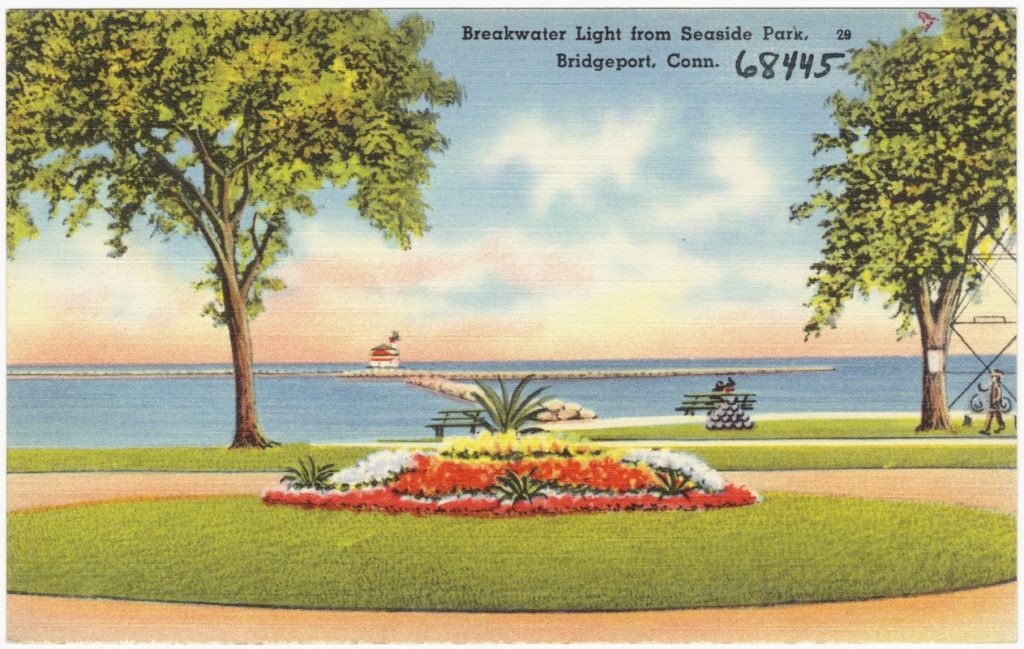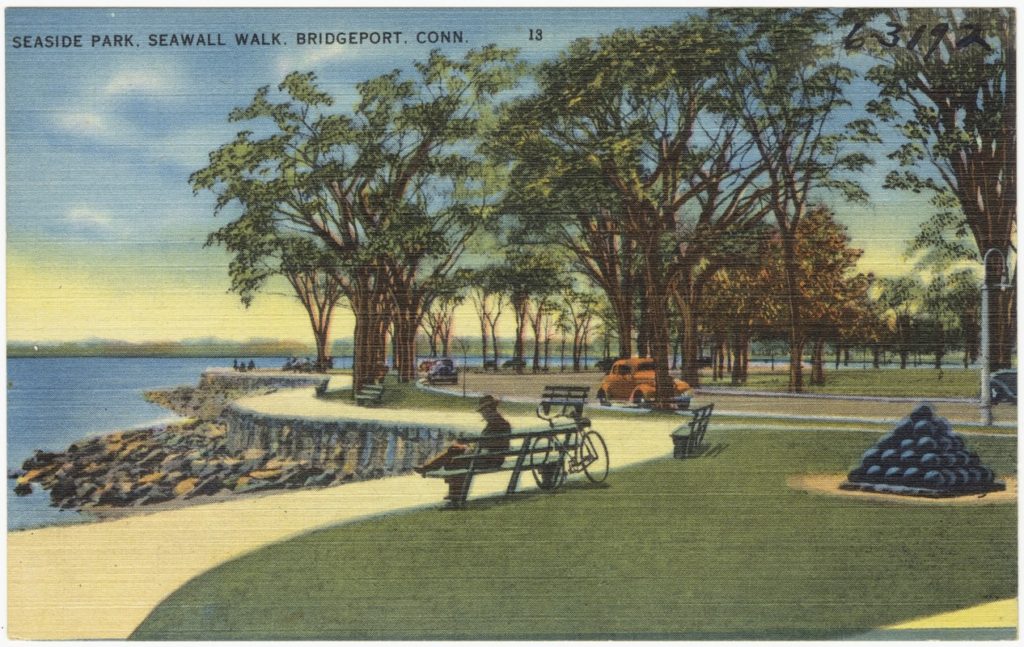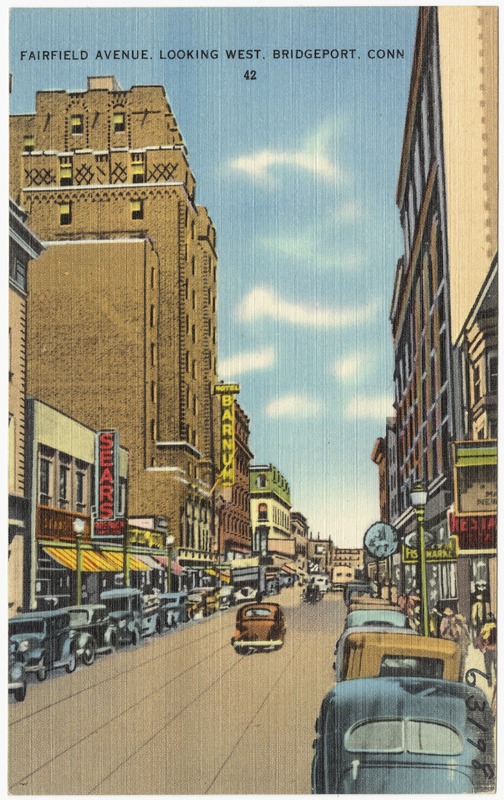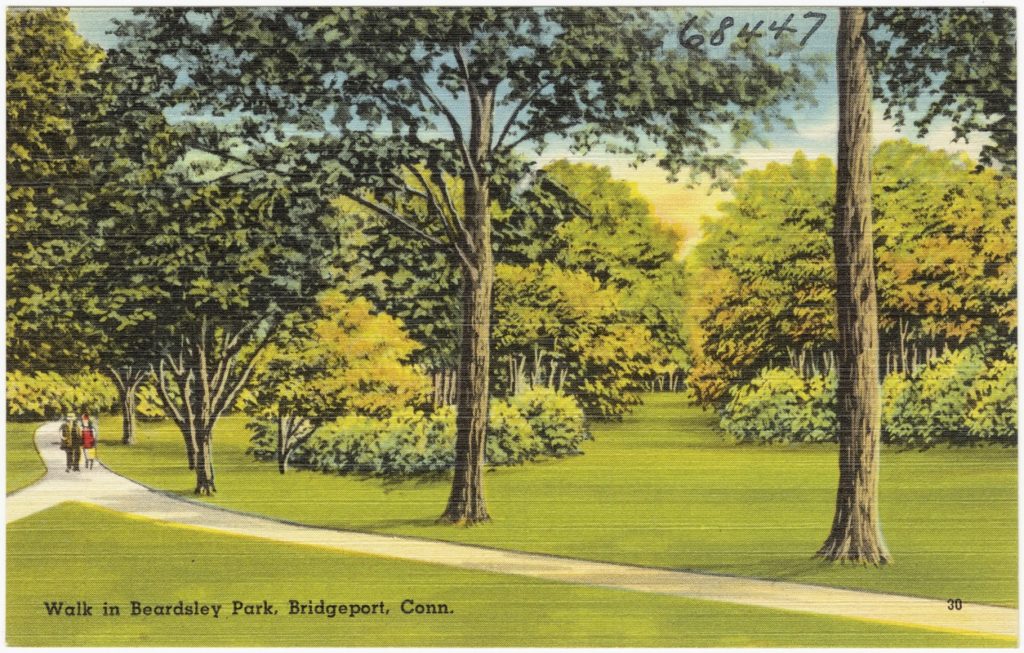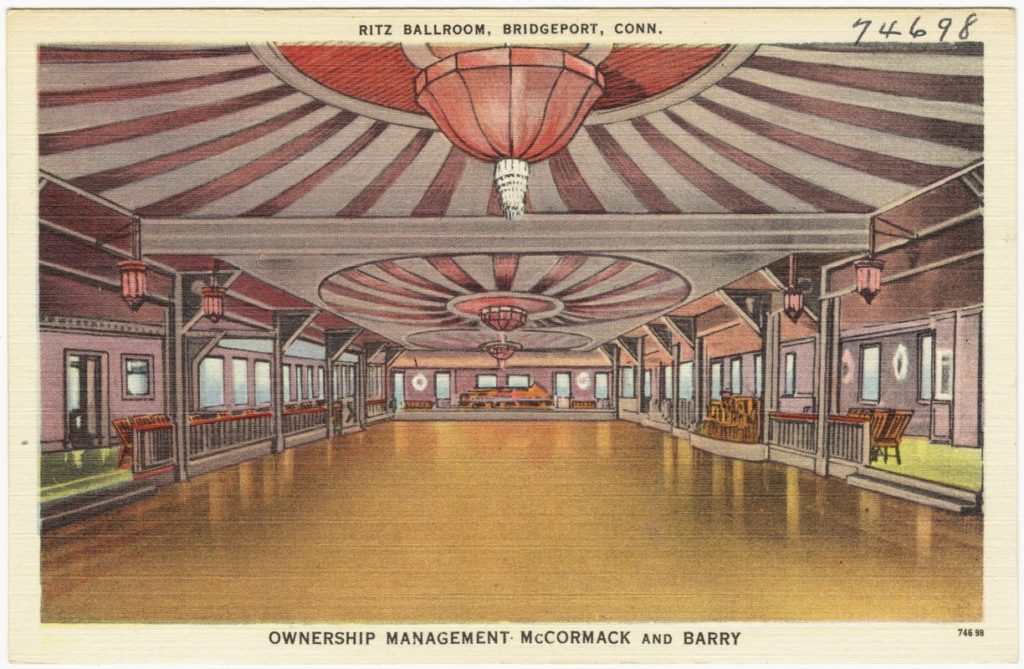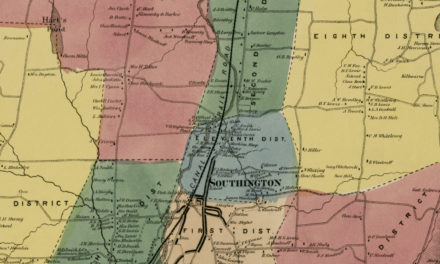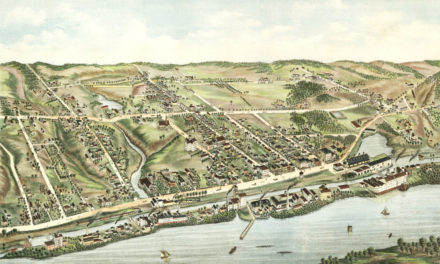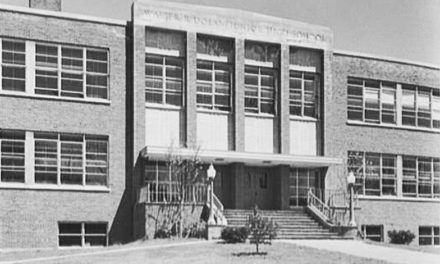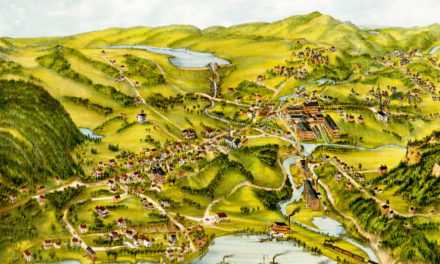Bridgeport is the largest city in the state of Connecticut, becoming the major industrial center of the state from 1870 to 1910, when its population rose from approximately 25,000 to over 100,000, due to an influx of thousands of Irish, Slovaks, Hungarians, Germans, English, and Italian immigrants.
This series of old pictures shows how Bridgeport, Connecticut looked during the 1930’s – 1950’s.
Greetings from Bridgeport, Conn.
Bridgeport became a center of trade, shipbuilding, and whaling, rapidly industrializing following the completion of the New York and New Haven railroad. Manufacturing was the mainstay of the local economy until the 1970’s, when industrial restructuring and suburbanization caused the loss of many jobs and affluent residents, leaving Bridgeport struggling with problems of poverty and crime.
Plaza and Bridgeport Harbor, Bridgeport, Conn.
Restructuring of heavy industry starting after the mid-20th century caused the loss of thousands of jobs and residents. Like other urban centers in Connecticut, Bridgeport suffered during the deindustrialization of the United States in the 1970s and 1980s. The loss of manufacturing jobs caused the city to decline until the 21st century, when the conversion of those old buildings and other redevelopment began to once again attract new residents.
Harbor View, Bridgeport, Conn.
Bridgeport Harbor from from the Stratford Avenue Bridge. The “Mayflower” steamer ship in use at the time can be seen in the background. The Mayflower made daily trips from Bridgeport to Battery Park, Manhattan and Hoboken, New Jersey.
The first ferry service from Bridgeport began in 1872, and The Bridgeport & Port Jefferson Steamboat Company was subsequently founded in 1883 by several investors, including entrepreneur P.T. Barnum. The Bridgeport & Port Jefferson Ferry now operates vehicle and passenger ferry service across the Long Island Sound, between the city of Bridgeport, Connecticut and the Long Island village of Port Jefferson, New York.
Candlelite Stadium – Bridgeport, Conn.
Candlelite Stadium opened in 1948 as the home of Bridgeport’s Class B Colonial League baseball team, The Bridgeport Bees. The stadium was located at 248 River Street. Besides baseball, the stadium was also home to midget car races, daredevil shows, wrestling, boxing and rodeo shows. The stadium could seat between 4,000 – 7,000 people on its wooden bleachers.
In 1955, E.M. Loew’s Theaters acquired Candlelite Stadium from the Bridgeport Sportsmen’s Club for a reported $110,000, razing the stadium to use the site for a drive-in theater, the Candlelite Pix Twin Drive In. A restaurant called Bruno’s Candlelite featured a large terrace overlooking the stadium. In 1971 the restaurant was sold and the name was changed to DeNitto’s villa. It was torn down in the 1980’s.
General Electric Buildings, Bridgeport, Conn.
GE bought one of its first factories in Bridgeport, Connecticut in 1920. The building previously housed the Remington Arms Company, but when the Bolsheviks overthrew the Tsar of Russia in 1917, they canceled the arms contracts Russia had with the weapons maker. The loss of revenue cause Remington to sell the factory, and GE bought it. The factory produced built GE products for decades until it closed in 2008. It was torn down in 2012.
The GE factory in Bridgeport covered 76 acres. That’s about 58 football fields. At its peak, it employed thousands of workers, and even had its own bowling alley. The factory may have been huge, but it wasn’t GE’s headquarters. Those were in upstate New York, where Thomas Edison founded the company in 1878. They later moved to New York City and then in the 1970s, to Fairfield, Connecticut, just one town over from Bridgeport.
Read more: GE’s Connecticut History Includes Bridgeport
South Main Street, Bridgeport, Conn.
This vintage postcard shows the area of 1001 Main Street as it looked in the middle of the 20th century. The Arcade Mall was one of Bridgeport’s longest running hotels, having opened in the 1840’s. The Arcade Mall is still open, but the hotel portion of the building has been turned into apartments.
Amusements at Pleasure Beach, Bridgeport, CT
From 1892 until 1959, Bridgeport’s Pleasure Beach was home to a popular amusement park. The park was accessible by ferry service and a wooden swing bridge that would carry automobiles and pedestrians. Guests would spend the day riding the roller coaster, playing carnival games, lounging at the beach, or trying to reach for the brass ring on the carousel (the horses of which are now housed at the nearby Beardsley Zoo).
According to the Bridgeport Library,
“The maple dancing pavilion with bell towers and glass sides became the biggest attraction, featuring the largest ballroom in New England. Stars of the Jazz Age like Gene Krupa, Glenn Miller, and Artie Shaw played here, and thousands of young people flocked to dance on the beautiful maple floor.”
After a portion of the bridge burned in 1996, Pleasure Beach was cut off and became accessible only by a lengthy hike along the shoreline, or taking a small private boat from the mainland. For more information on the park during its heyday, visit the Bridgeport Library’s website.
Ann Hathaway Cottage, Beardsley Park, Bridgeport, Conn.
Anne Hathaway’s Cottage is a twelve-roomed farmhouse where Anne Hathaway, the wife of William Shakespeare, lived as a child in England. A replica of the “Anne Hathaway Cottage” was built in Bridgeport’s Beardsley park on the 300th anniversary of the author’s death. The Bridgeport Art League proposed the picturesque English cottage to the city as a Shakespeare Memorial and a tribute to James Beardsley, who donated the park to the city. It was intended to be a natural history museum for the children of Bridgeport.
Breakwater Light from Seaside Park, Bridgeport, CT
P.T. Barnum was largely responsible for the creation of Seaside Park, writing in his autobiography,
“… when the hand that now pens these lines is stilled forever, and thousands look across the water to Long Island shore and over the groves and walks and drives of the beautiful grounds at their feet, it may be a source of gratification and pride to my posterity to hear the expressions of gratitude that possibly will be expressed to the memory of their ancestor who secured to all future generations the benefits and blessings of Sea-Side Park…”
Read more about Seaside Park’s history at BridgeportCT.gov
Seaside Park, Seawall Walk, Bridgeport, CT
In his biography, P.T. Barnum talked about the land that now comprises Seaside Park, saying
“Up to 1865 the shore of Bridgeport west of the public wharves, and washed by the water of Long Island Sound, was inaccessible to carriages or even to the horsemen, and almost impossible for pedestrians.
The shore edge was in fact strewn with rocks and boulders, which made it like “JORDAN” in the song, an exceedingly “hard road to travel.” A narrow lane reaching down to the shore enabled parties to drive near to the water for purposes of clamming, and occasionally bathing; but it was all claimed as private property by the land proprietors, whose farm extended down to the water’s edge…
I was satisfied that a most lovely park might be, and ought to be, opened along the whole waterfront as far as the western boundary line of Bridgeport. I immediately began to agitate the subject in the Bridgeport papers, and also in daily conversations with such of my fellow citizens as I thought would take an earnest and immediate interest in the enterprise.”
Perry Memorial Arch, Seaside Park, Bridgeport, Conn
Perry Memorial Arch spans the entrance to Seaside Park in Bridgeport. The arch, designed by architect Henry Bacon, was constructed in 1918. Henry Bacon later served as the lead architect of the Lincoln Memorial in Washington, D.C.
The arch was built in memory of William H. Perry, the president of the Bridgeport city parks commission. He bequeathed the money for the construction of an archway to serve as an entrance to Seaside Park.
Fairfield Avenue, looking west, Bridgeport, Conn.
This picture shows Fairfield Avenue at it looked in the 1950’s. Hotel Barnum is now known as The Hotel Beach, a historic hotel building built in 1927 at 140 Fairfield Ave. The Hotel Beach is a thirteen-story Art Deco tower with a steel frame clad in colored bricks of various colors, laid predominantly in a broken Flemish bond pattern, and is one of the city’s outstanding Art Deco buildings. It was listed on the National Register of Historic Places in 1978. It is currently used as an apartment building called Barnum House.
Walk in Beardsley Park, Bridgeport, CT
In 1878, James W. Beardsley, a wealthy farmer, donated over 100 acres of hilly land bordering the Pequonnock River with a distant view of Long Island Sound to the city of Bridgeport on the condition that “the city shall accept and keep the same forever as a public park”. In 1881, the city contracted Frederick Law Olmsted, famous for creating New York City’s Central Park, to create a design for Beardsley Park.
At the time of the park’s creation, the city of Bridgeport was home to P.T. Barnum and his world-famous circus. Barnum used to exercise his animals through the streets of Bridgeport, and people gathered in Beardsley Park to see the zebras and camels walking by. In 1922, the park became home to a zoo, and remains one of the only zoos in the state.
Ritz Ballroom, Bridgeport, Conn
The Ritz Ballroom was a popular cabaret, jazz, and swing nightclub located in the Black Rock neighborhood of Bridgeport, Connecticut near Ash Creek. The ballroom opened on March 23, 1923, and the final event held was the New Year’s Eve Dance on December 31, 1961. After it was closed on January 1, 1962, the building became a furniture store but was then completely destroyed by a fire on June 12, 1970.

